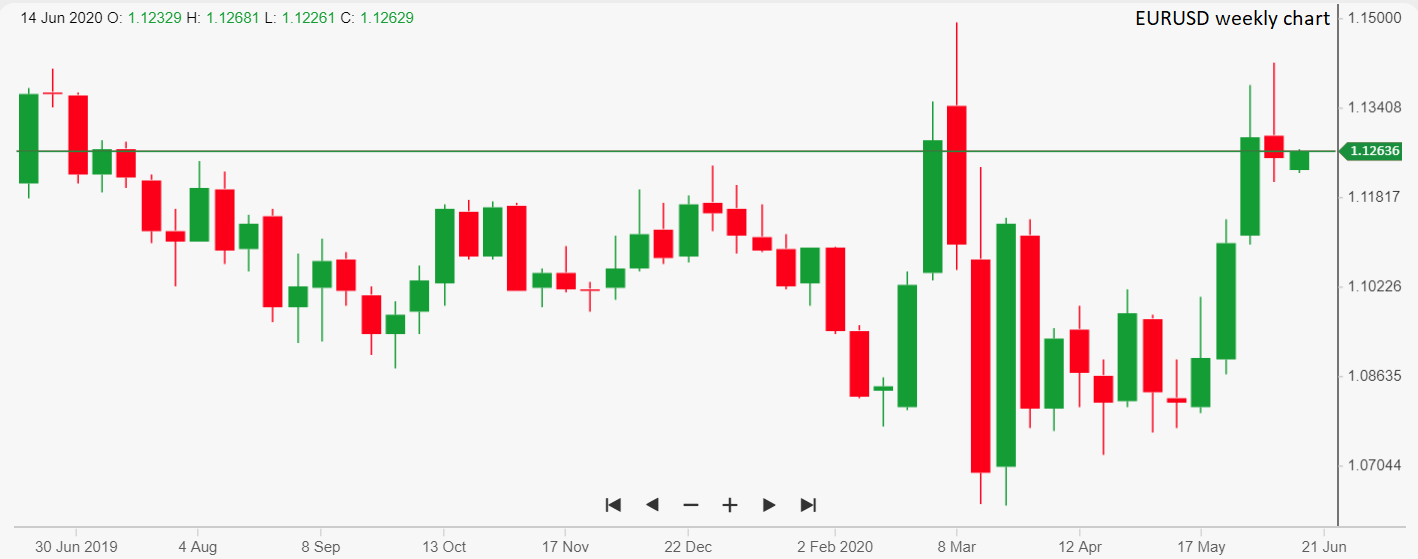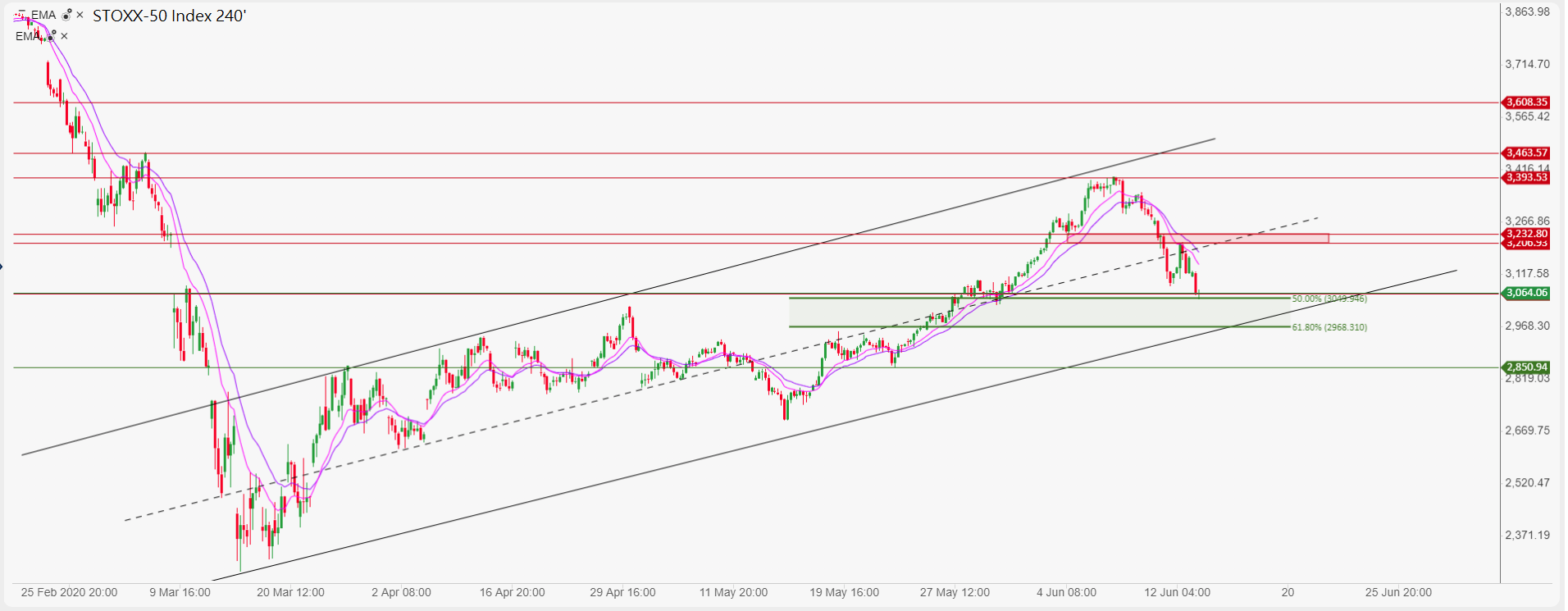FOREX
The forex market is hesitating between maintaining the risk-on stance that prevailed from late May and into the start of June, or fully embracing the more cautious approach that crept in at the end of last week. The euro lost more than 1% to the dollar during Thursday and Friday, as a resurgence of new infections in previously cleared regions caused investors to start worrying about the possibility of a second wave of the pandemic. The euro is specially exposed to a potential loss of investors’ faith in a quick economic recovery, with the currency associated with risk. The next few sessions are likely to clarify which state of mind prevails in the markets; optimism is likely to support the single currency, while renewed pessimism could take it back to the lows of mid-March.

EURUSD chart
Ricardo Evangelista – Senior Analyst, ActivTrades
OIL
After weeks of gains, the trend for oil has changed again. From a fundamental point of view, we haven’t seen huge changes, as there is no big news. The reality is that in this phase, markets are moving on emotions and gut-feel rather than rationality. This is generating disproportionate and impulsive movements, in both directions, illustrated by oil’s rally from $0 to $40 and subsequent fall of around 15% seen in the last few days. The rally was supported by generous expectations for a V-recovery of economies while the recent correction (which was also seen on stocks) is a normalization after the panic buying. Technically, WTI futures are back to the levels seen in March when OPEC failed to agree on a deal. It will be interesting to see if this zone can support price in the next few days to generate a rebound or at least avoid a further decline as this would denote that we have found a new equilibrium for the price of WTI between $34-$35.
Carlo Alberto De Casa – Chief analyst, ActivTrades

